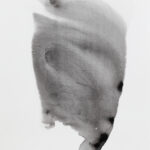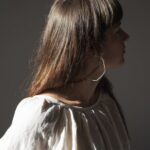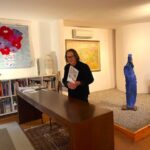SOPHIE LEBASQUE – “Painting is like love: it is both a source of joy and of misery”
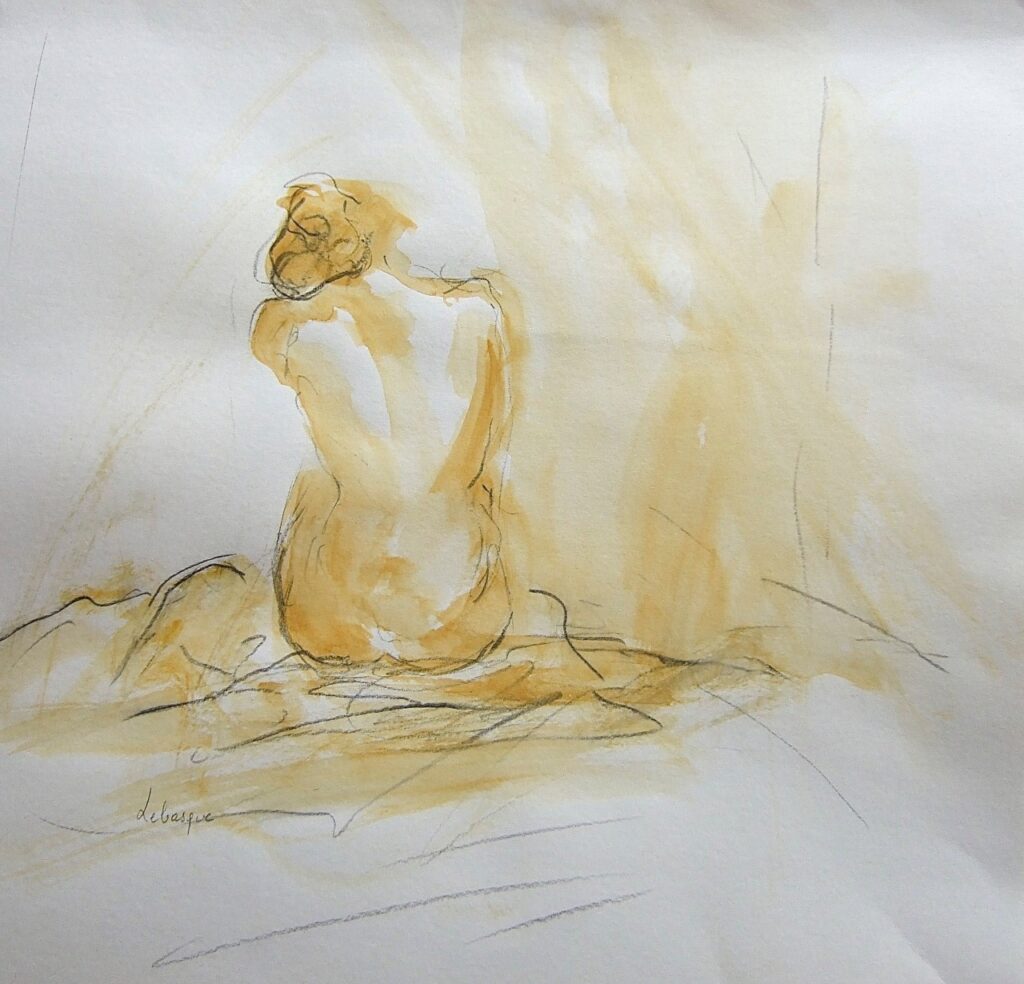
While I was preparing the present blog at the end of the day, I repeatedly witnessed some of the most flamboyant sunsets I have ever seen. The whole horizon was ablaze with psychedelic reds and violets and everything in between. They reminded me of the brilliant watercolours by Emile 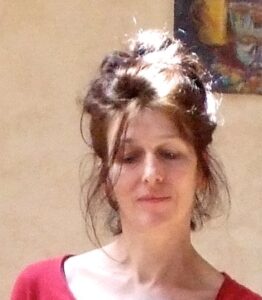 Nolde the German expressionist painter. As the sun gradually sank below the far away ridgeline of the Ardèche mountains I could not help thinking how fortunate I was to live in the Drôme and that Nolde, had he stood beside me, would have agreed that where we were is one of the most inspiring and privileged parts of France. It is hardly surprising that so many artists have chosen to settle here and why I keep on discovering new ones for my blog. The present artist is a late comer to the art world, someone who, once settled in the Drôme with her husband and children, decided that she had to become a painter. In our present troubled times, I hesitate to use the term mutation but that is exactly what happened to Sophie Lebasque.
Nolde the German expressionist painter. As the sun gradually sank below the far away ridgeline of the Ardèche mountains I could not help thinking how fortunate I was to live in the Drôme and that Nolde, had he stood beside me, would have agreed that where we were is one of the most inspiring and privileged parts of France. It is hardly surprising that so many artists have chosen to settle here and why I keep on discovering new ones for my blog. The present artist is a late comer to the art world, someone who, once settled in the Drôme with her husband and children, decided that she had to become a painter. In our present troubled times, I hesitate to use the term mutation but that is exactly what happened to Sophie Lebasque.
Sophie is a neighbour and I have known her for many years. I was aware she painted, that she had followed painting courses, and had also attended live drawing sessions at Nadine Nacinovic’s place. But she is a discreet person and when I asked her about it, I took it for granted that she had taken up painting as a hobby like so many other residents around here. When I heard that making art had become a full-time occupation for her, I decided to make an appointment and visit her studio.
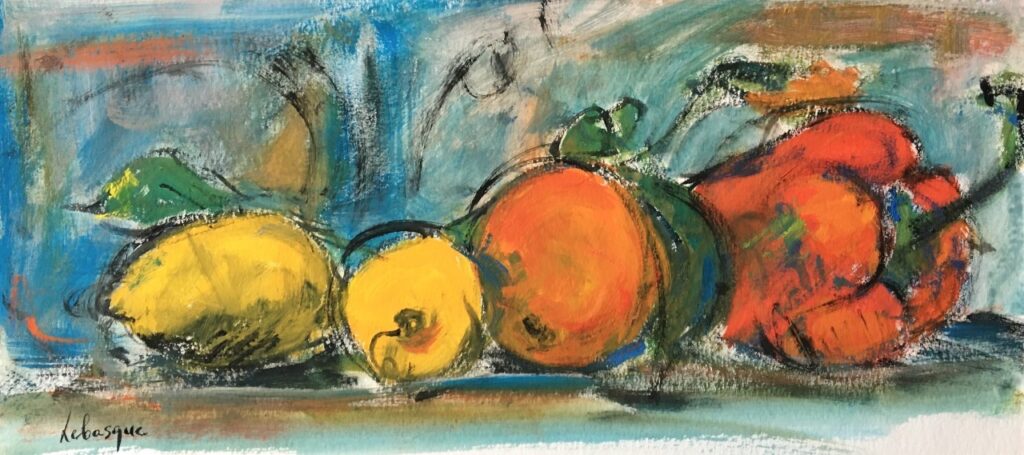
The sheer number of paintings and drawings immediately made me realize that there was much more to it than a pleasant pastime. The various sized paintings, the large number of fine drawings Sophie showed me and the way she talked about them made me realize how much they meant to her. One remark she made in particular when she explained the reasons that had inspired her to adopt art as a way of life struck me. Sophie had previously studied kinesiology out of a deeply felt need to help others. She had also practised art therapy. However, she finally came to the conclusion that painting and, putting her heart into what mattered most for her would be an equally effective way of helping those who were in need of support.
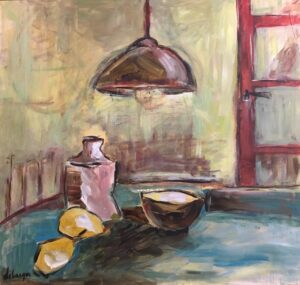 Besides such personal considerations Sophie is driven by the same exigency to create as any other artist. The style is realistic but looking and studying her work I could not help feeling that it was done with the hand of a poet. The main subjects, still life and the human figure, have a touching dreaminess about them. They are beautiful and they clearly express the deeper feelings Sophie has put into them. Given what she has achieved in the relatively short time since she took up painting she is definitely far more than a “budding” artist and who knows how bright her future will be?
Besides such personal considerations Sophie is driven by the same exigency to create as any other artist. The style is realistic but looking and studying her work I could not help feeling that it was done with the hand of a poet. The main subjects, still life and the human figure, have a touching dreaminess about them. They are beautiful and they clearly express the deeper feelings Sophie has put into them. Given what she has achieved in the relatively short time since she took up painting she is definitely far more than a “budding” artist and who knows how bright her future will be?
Here are some questions I asked Sophie during our interview and her answers.
QUESTION
Since when have you been interested in art and as a child did you like making drawings? I know that you had a great grand uncle, Henri Lebasque, who was a very well-known post-impressionist painter and a friend of Matisse, Bonnard, Vuillard, Rouault, etc. Interestingly, your paintings and drawings have something in common with those he made, in particular the nudes. Could it be that there is a form of atavism at play and that painting runs in your family?
ANSWER
Not really, we enjoyed literature at home and culture in general including popular music but I am perhaps the only one to my knowledge who carried painting in her genes. I loved drawing when I was a little girl but my real interest in art in a broader sense began when I was a teenager.
Q
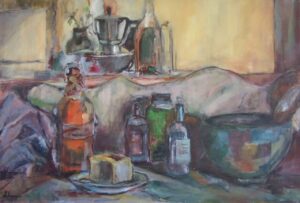 You took up painting on a regular basis at a relatively late stage in your life and little by little it has become a full-time occupation. Could you explain how the development took place?
You took up painting on a regular basis at a relatively late stage in your life and little by little it has become a full-time occupation. Could you explain how the development took place?
A
As I have already said I like art in general. After moving to the Drôme with my family I followed various courses in painting which I thoroughly enjoyed. I liked sharing experiences with other like-minded participants and learning from the artists who were in charge. I also began to realise how close and in harmony with myself I was when I was busy painting and drawing. As time went on, I started to work more and more frequently at home, initially as a pastime without any specific plans to change my way of life, but that did not last.
Q
What decided you to change?
A
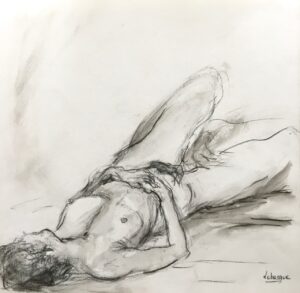 One of my reasons for studying kinesiology was to help others. However, at a certain point having finished my studies, I began to feel uncomfortable at the idea that I would also have to advise my clients in matters relating to their intimacy and their personal lives. I considered that it was not my place to do so! So, rather than advocating healing therapies that I had studied in books I sensed that I had more to offer to those who were in need of support and solace by leading the life I had planned for and making use of my painting and drawing talents. We know that creating things of beauty gives the beholder aesthetic pleasure, warms the heart, and stirs emotions and also has healing properties. I was very much relieved when I came to understand and realise this potentiality of art and it comforted me in my choice of wanting to pursue my work as an artist as long as I could.
One of my reasons for studying kinesiology was to help others. However, at a certain point having finished my studies, I began to feel uncomfortable at the idea that I would also have to advise my clients in matters relating to their intimacy and their personal lives. I considered that it was not my place to do so! So, rather than advocating healing therapies that I had studied in books I sensed that I had more to offer to those who were in need of support and solace by leading the life I had planned for and making use of my painting and drawing talents. We know that creating things of beauty gives the beholder aesthetic pleasure, warms the heart, and stirs emotions and also has healing properties. I was very much relieved when I came to understand and realise this potentiality of art and it comforted me in my choice of wanting to pursue my work as an artist as long as I could.
Q
Some people might find your reasoning and conclusions a bit far-fetched and difficult to accept.
A
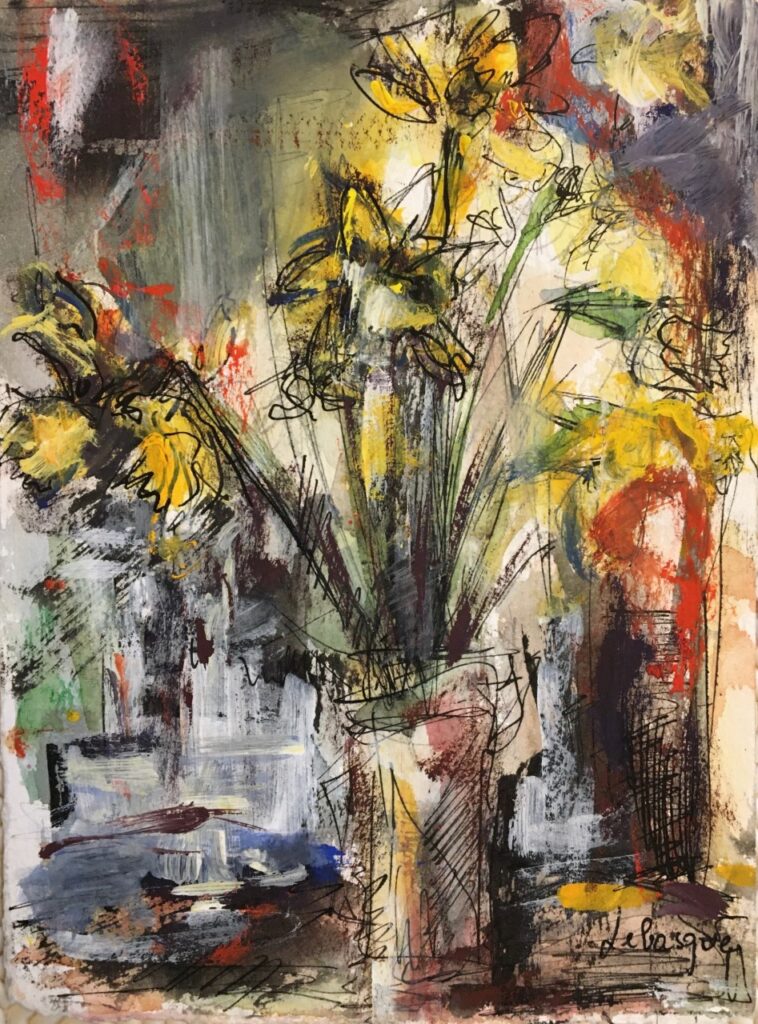 No, no I am convinced of the contrary! We know now that art – at least sincere art coming from the heart – has curative properties, it can sooth, make you happy and change your ideas. In some cases, people are even overpowered by its impact and fall into a faint (the Stendhal syndrome as it is known was recorded by the French writer when he became unwell after having spent too much time absorbing the beauty of paintings of the Italian Renaissance he admired.) This kind of impact is scientifically well established. Our brain reacts to art and I don’t need to tell you how the mind works on the body. As I happen to be a creative person who loves painting there is real satisfaction in knowing that by waving this mysterious and magic wand, I can make others feel better.
No, no I am convinced of the contrary! We know now that art – at least sincere art coming from the heart – has curative properties, it can sooth, make you happy and change your ideas. In some cases, people are even overpowered by its impact and fall into a faint (the Stendhal syndrome as it is known was recorded by the French writer when he became unwell after having spent too much time absorbing the beauty of paintings of the Italian Renaissance he admired.) This kind of impact is scientifically well established. Our brain reacts to art and I don’t need to tell you how the mind works on the body. As I happen to be a creative person who loves painting there is real satisfaction in knowing that by waving this mysterious and magic wand, I can make others feel better.
Q
There are two recurrent subjects in your work, the still life and the human figure. In both cases you follow an age-old tradition. It would take a whole library to describe their place in the history of art. When I look at your renderings of both I see tenderness and delicacy. You approach both subjects with assurance but at the same time you seem to do it with great care for fear of damaging their beauty. You have made quite a large number of excellent figure drawings which as I said is a long-standing form of art. Artists have been representing the human form ever since the dawn of time in conformity with the style peculiar to a civilisation or an epoch. The challenge for the artist is to deal with the subject in an original and personal way and as far as I can judge you are doing very well.
A
It is true there are many still lifes and nudes in my work, in part I think because those were the subjects we were required to do when I attended painting and live model drawing sessions. I feel much less at ease with landscapes, but that will perhaps come in the future. By nature, I am a home-loving person, and I am attached to the objects that surround me. A plate of fruits, a bunch of flowers inspire me, so I like to make these inanimate subjects vibrate and their colours sing. For me painting them is not just a question of reproducing them as they are but to make poems out of them. When I have finished a painting or a drawing, I am the first one to be surprised by what I see and although they are my own creation, I have no idea whatsoever how the creative process worked. Is it beauty, harmony, something that needed to be expressed, I do not know? But if I like them then it will be their turn to look at me. It is magical!
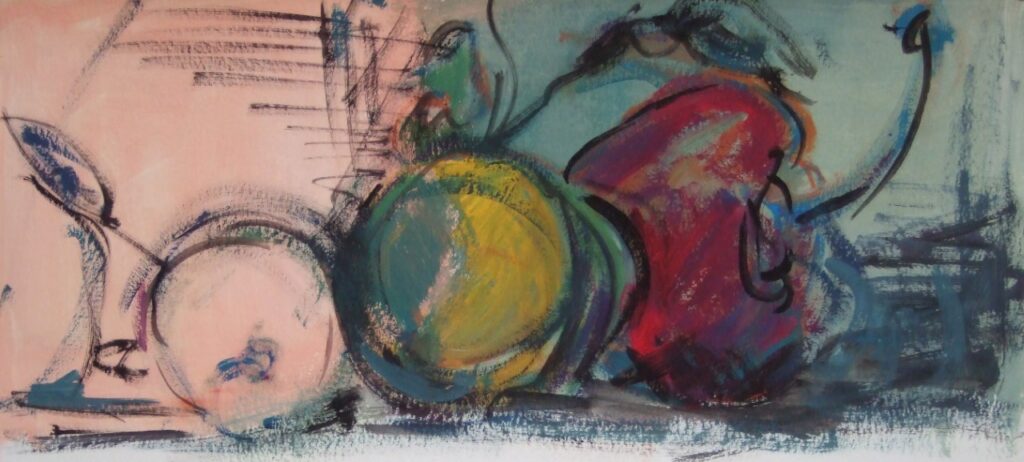
I have never given much thought to the reasons why I like to paint the human figure. Here again can it be harmony, or grace, or the flow of lines of the naked body, or perhaps because the human form mirrors an image of ourselves that arouses so many and often contradictory emotions? Who knows? Whatever the case may be, I read somewhere that the representation of the human body is perhaps the most revealing of all the aesthetic symbols contrived by man. So, it is hardly surprising that as an artist the subject should appeal to me!
Q
Can you give me some of the names of artists you admire?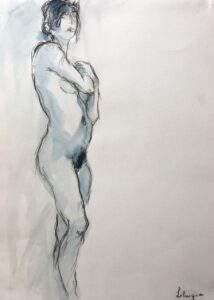
A
Toulouse Lautrec, Schiele, Van Dongen, Vuillard, Bonnard, Nolde and the Finnish painter Helen Schjerfbeck whose paintings are so full of northern melancholy like in the work of Edward Munch for example.
Q
Why are you reticent about exhibiting your paintings?
A
I am not against showing my work, on the contrary, but it is difficult to find the right spot. My drawings and paintings are very important to me and I don’t want to turn them into items of commercial value. That is probably the main reason for not wanting to exhibit at any price.
Contact Sophie Lebasque by Email: sophie.leh@gmail.com
Posted in: Art
